In Ground Pool Shapes Cont'd...
HOW DOES A POOL WORK?
For many of us, the workings of a swimming pool are a complete mystery. However, it is essential that we understand the basic principles and how the various items of equipment interact. Follow the water and, through the diagram below, discover what you have always wanted to ask about swimming pools.
Pool circulation systems work much like the body’s circulatory system. Water is drawn from your pool by the powerful suction created from the pump.
The pump draws the water through the skimmers and drains, removing large debris during the journey.
When the pump’s impeller is reached, pressure forces water through the filer, catching any debris not caught by skimmer baskets.
Water is treated (sanitized) and heated before it is returned to the pool.
With so many moving parts, maintenance is key to keeping your pool circulation system at optimal performance.

1) Water collection
Skimmers collect and skim water on the surface (2/3rds) by propelling the water towards the filters and screening out the largest debris in their strainer basket while the main drain collects the colder water from the bottom (1/3rd) for improved mixing. This enables us to not only produce evenly heated water but also its uniform chemical treatment because the treatment products are evenly distributed throughout the pool.
2) Suction and filtration
The pump is also fitted with a strainer basket to trap foreign bodies and draws up water that it sends to the filter which is the key component of this installation. The filter screens out impurities in order to guarantee clean water, a crucial consideration for pleasant bathing and for the system’s longevity. Warning: this pump/filter pairing must be perfectly matched as the pump output must never exceed the capacity of the filter. There are different types of filter but all require regular maintenance.
3) Heating
After it leaves the filter, water can be heated using a variety of systems: electric heater, solar panels and, in this case, a heat pump
4) Water treatment
Water treatment is the final step water undergoes. There are several more or less automated processes designed to achieve water that is constantly perfectly healthy and balanced. In this case, it is an electrolyser. We cannot stress enough the importance of water treatment. Here again, opting for a low cost system can result in considerable inconvenience because the water’s balance is a delicate one and requires constant monitoring.
Warning: all this equipment is interlinked by pipes; if they are not properly dimensioned, then the system will not work. So we need to establish the correct ratio. Pool size is used to calculate the theoretical output that must be produced by the pump and the filter. Accordingly, we calculate pump power, filter capacity and pipe diameters bearing in mind that the water in the pool should be renewed 2 to 4 times in 24 hours.
5) Maintenance and lighting
The cleaner socket is used to adapt different types of automated pool cleaners used for swimming pool maintenance.
Finally, lights allow the pool to be used at night and enhance its appearance. There are two available technologies: the classic 300 Watt halogen light or the colour LED which is becoming increasingly more common.
Building your pool yourself
You have looked at all the pool stores and pool manufacturers and read all the pool documentation available on the Internet and you have an idea of what you want. How should you go about building your pool?
Self-building a swimming pool is generally related to economic choice and is perfectly feasible for those who are skilled and have time at their disposal. If you choose this method of construction, prefabricated kits containing all the necessary equipment for building your own pool are available at Pool Products Canada Inc. They come with instructions for use, but more importantly, you can rely on our technical advice as it relates to construction, product selection, turnover flow rates, hydraulics, heating, lighting and automation.
You may of course decide to build a masonry pool without any outside assistance, provided you can get detailed information on the best practices to be applied and the administrative procedures to be completed. Also bear in mind that the structural work will not be covered by any guarantee.
Our pool advice: with respect to building your own pool, take the necessary time to assess the situation, so that you can embark on the work in full knowledge of the facts, and remember that for your pool to remain a pleasure, it must not become a chore. We are here for you.
What type of pool should you choose?
Steel Panel with liner option;
The walls of this type of pool are made of prefabricated steel, resin or concrete panels, which makes it easier to build and reduces the cost accordingly. A liner is used to ensure that it is waterproof. The floor of the pool is generally made of reinforced concrete.
How does it work? The panels are assembled to give the walls the shape you have chosen. The concrete is then poured along the walls to strengthen them according to the technique known as permanent formwork.
This type of technology is used for "prefabricated" pools sold as ready-to-install kits.
Advantage: this technique offers the same choice of simple shapes as a masonry basin with liner, at a lower price.
The fiberglass shell pool option;
It is entirely factory-made from resin and fibreglass. The shell provides the structure and is waterproof. Simply dig a hole and place the basin in position: this is the fastest construction method.
Advantage: the process is particularly economical.
Disadvantage: the variety of shapes is limited.
Caution: as the basin is delivered in one piece, you must provide a viable means of access to the site. Otherwise, a telescopic arm which passes over the house to the garden is often used to deliver the shell, which is a tricky operation.
In-Ground Steel Shapes
Choose standard shapes or design your own.
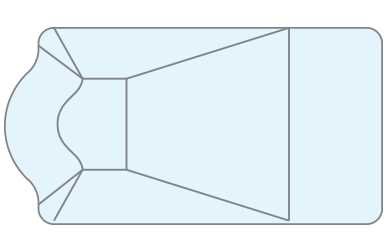
Santiago
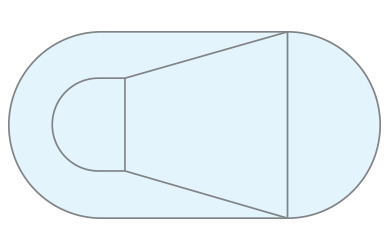 Oval
Oval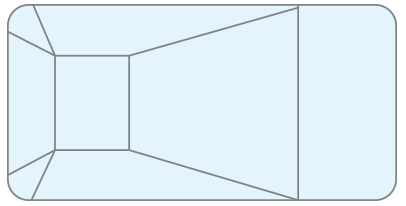
Rectangle (2′ Rad)

Bordeaux
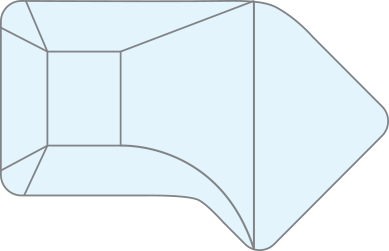
Lazy-L (2′ Rad)
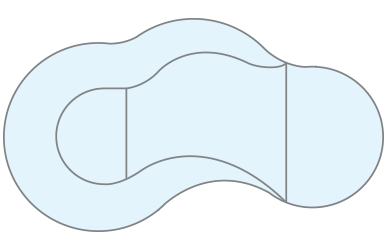
Normandy
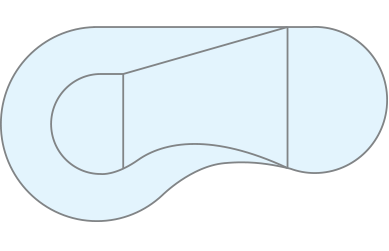
Algarve
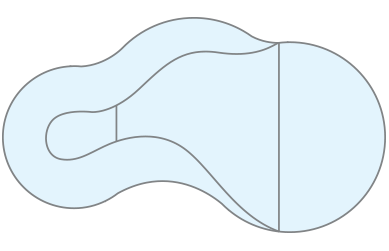
Marseille

Grecian

Kidney
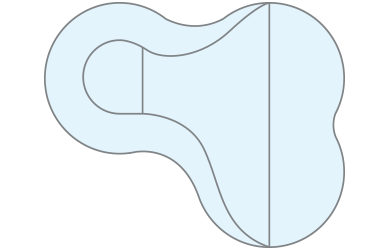
Sonesta
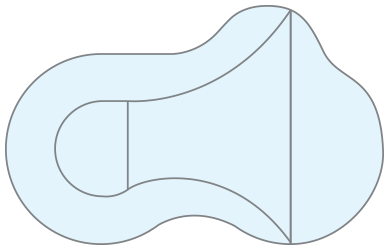
Polynesian

Ixtapa
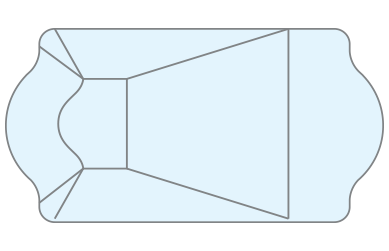
Santa Cruz

